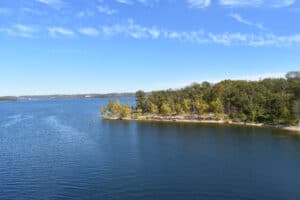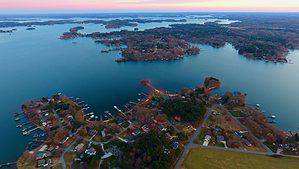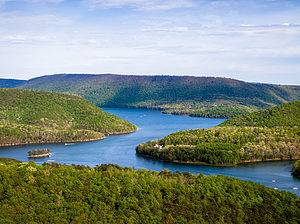Have you ever looked at a body of water and wondered whether it was a lake or a pond? Here’s everything you need to know when determining whether a body of water is a lake vs. a pond.
Lakes vs. Ponds
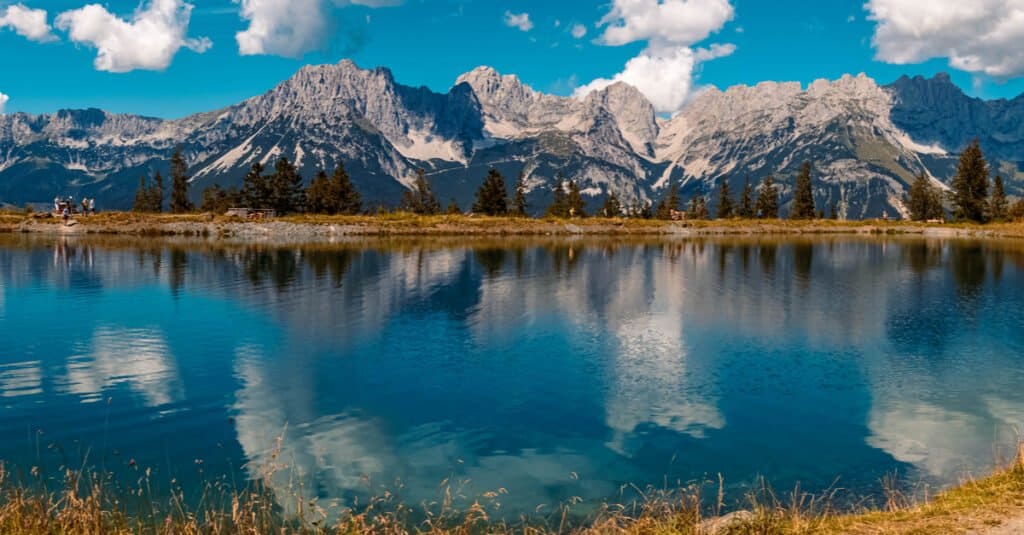
A beautiful lake setting
©Martin Erdniss/Shutterstock.com
A body of water is called a pond when it is small and enclosed, while a lake is large and open. There are many lakes in the world, even though there are more ponds than lakes. Some lakes can be 4,000+ feet deep, while most ponds are shallow. Many people use the word “lake” to describe any body of water that does not distinguish between its size or depth. The two terms are often used interchangeably because there is no standardization on the matter.
Here are some steps to help you tell the difference between a lake and a pond:
1. Depth: A lake is generally deeper than a pond.
2. Shape: A lake also tends to be more of an oval shape with peninsulas, while ponds usually have rounded edges.
3. Nature: Lakes are mostly freshwater but can contain some amounts of salt water, while ponds are freshwater.
| Lake | Pond | |
| Depth | 20-4,000 feet | 4-20 feet |
| Outlet | Open | Closed |
| Size | 200+ acres | <200 acres |
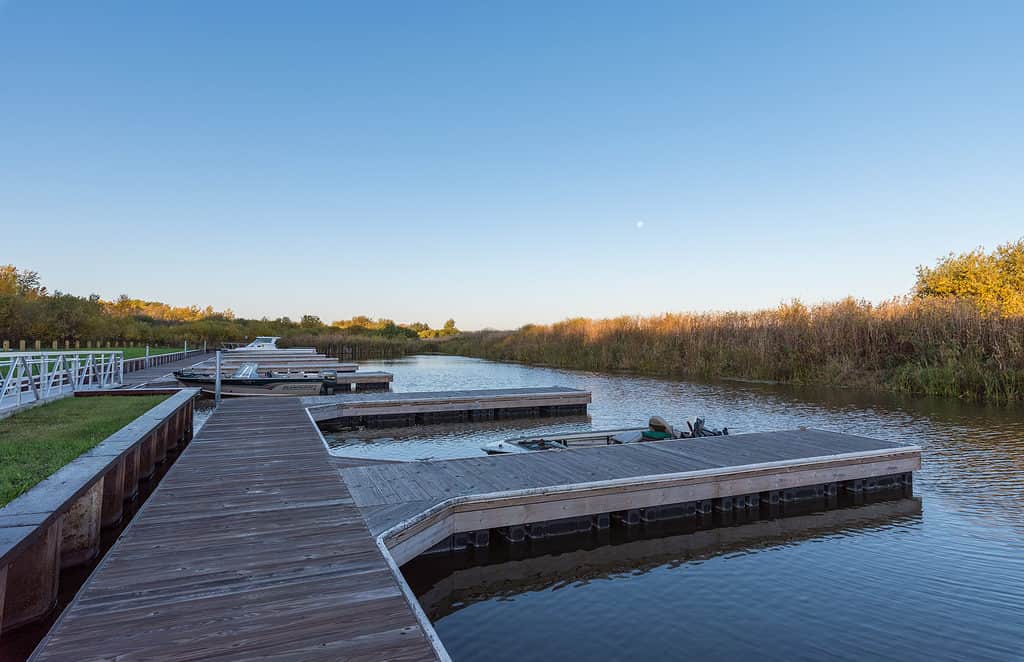
Lakes are usually larger than 200 acres.
©Tony Webster/Wikimedia Commons – License
Here are some other ways you can tell if you’re looking at a lake or a pond:
The Definition of Lakes and Why There’s No Standardization
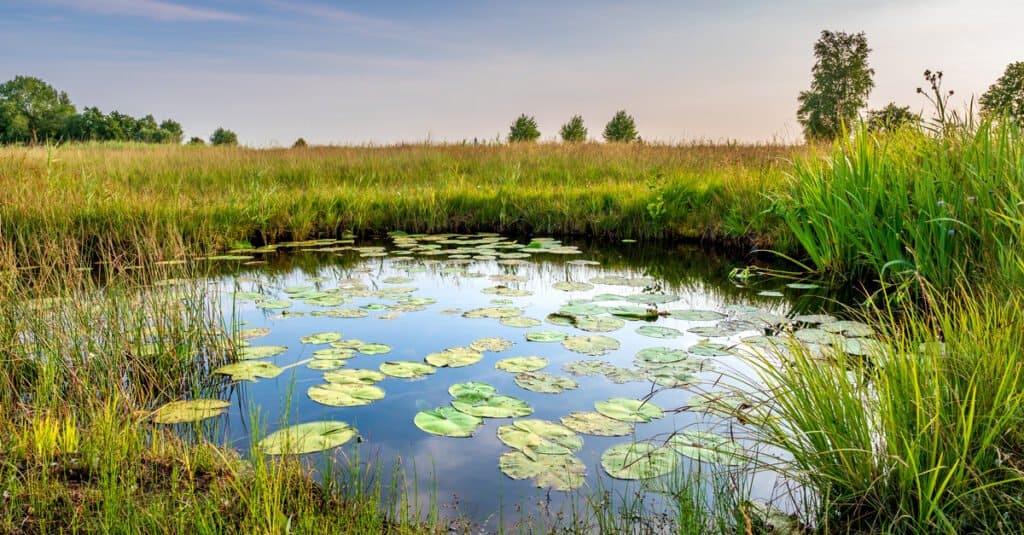
A typical pond
©Jasper Suijten/Shutterstock.com
The National Oceanic and Atmospheric Administration (NOAA) has given the following guidelines to distinguish between these two bodies of water.
- A pond is a body of water less than 0.5 acres (150 square meters) in an area or less than 20 feet (6 meters) in depth.
- A lake is defined as a body of water bigger than 1 acre (4,000 m²), although size is not a reliable indicator of its water quality.
One reason it is difficult to follow any standardizations is when lakes and ponds were named, the people naming them didn’t know what to call them. For example, settlers across America would arbitrarily use lake vs. pond in naming bodies of water. In Vermont, Echo “Lake” is 11 feet deep, while Conway “Pond” reaches 80 feet deep.
The Difference Between a Lake and a Pond
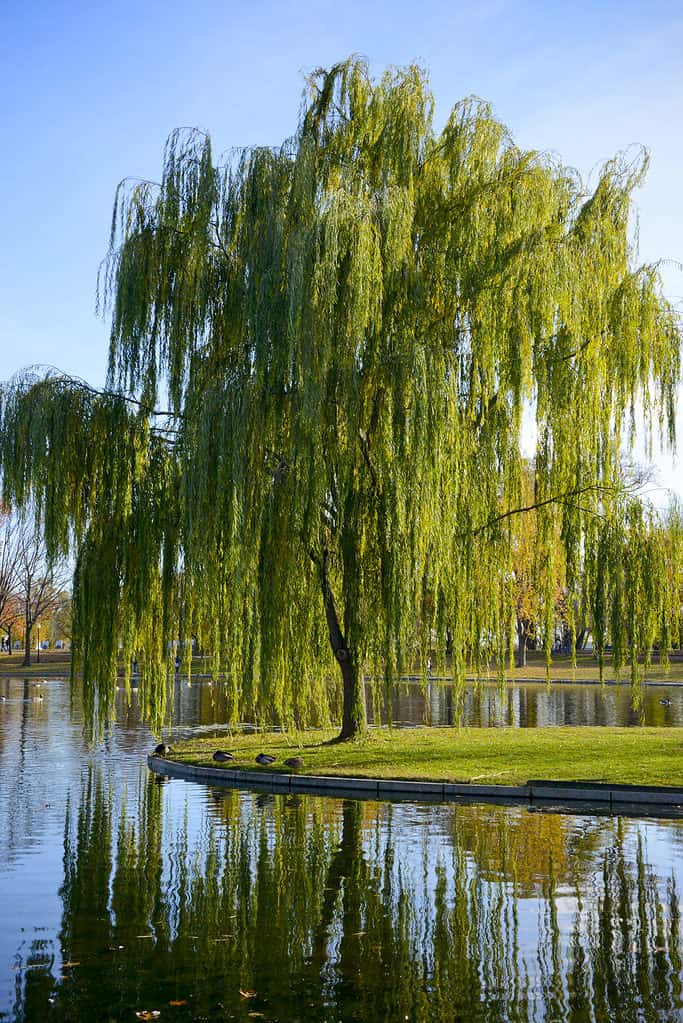
Ponds are usually smaller than 200 acres across.
©iStock.com/merrilb
With so many lakes, ponds, and streams in the world, it might not be very clear to know which one is which. A lake has no standard scale of how deep it is.
A pond is formed by slow, gradual excavation, such as from a marsh or bog. You will find pond lilies in ponds, even though lily pads and reeds are more common in lakes. The original layer of sand and mud surrounding the pond is gradually eroded, exposing the bottom. This bottom layer is similar to a marsh or bog and usually comprises a thin layer of rock with a few layers of vegetation.
Many ponds have an underwater garden of aquatic plants and trees. On the surface of ponds, there are areas where the top layers of dirt, rocks, and vegetation have been worn away, exposing the underlying layer of pond soil.
The simplest way to distinguish between a pond and a lake is to find out their depths. A small pond is usually 4 to 20 feet deep, while lakes are typically any depth beyond 20 feet.
In most lakes, the deepest spot is known as the “last drop” or “end of the lake.” The water in a small pond or a natural spring will not have any depth to it. Lakes are deep enough that plants don’t grow on the bottom, but ponds are shallow enough for plants to flourish. Lakes are often fed and drained by rivers and streams.
The Reason Why the Two Terms Are Often Used Interchangeably
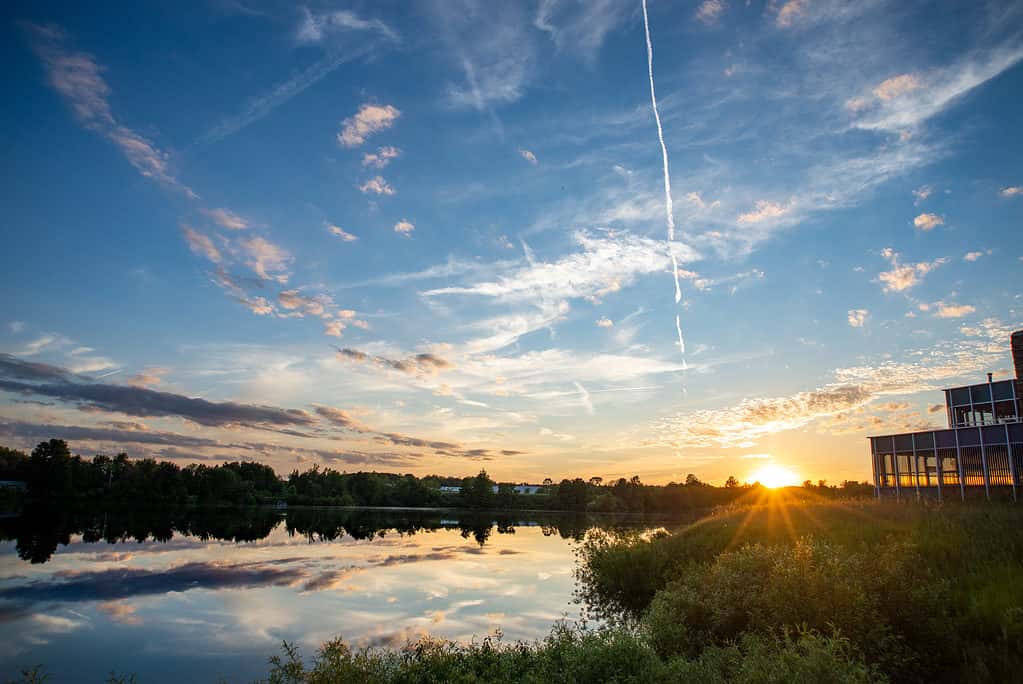
Lakes and ponds are usually teamed with wildlife.
©Shelly MD Photography/Shutterstock.com
Small ponds are often referred to as lakes and vice versa. It’s sometimes hard to distinguish between a lake and a pond because there are few differences. A pond is sometimes called a lake when small and enclosed, while a lake is large and open. One distinction between lakes and ponds is due to the land surrounding the pond. There are three questions you can ask yourself to help determine if you are looking at a lake or a pond.
- Does light reach the bottom of the deepest point of the water body?
- Does the water body only get small waves?
- Is the water body relatively uniform in temperature?
How Deep Are Most Farm Ponds?
A pond should ideally be 6-8 feet deep. Most life happens near the surface, and water deeper than 8 feet isn’t very safe or useful for most species of pond fish. If it gets too deep (over 10 feet), it can lead to problems like low oxygen and fish dying in the summer.
Choosing the right fish for your pond is essential. You can select from a variety of fish types, including surface fish, eye-catching fish with vibrant colors, and those that don’t reproduce rapidly. Surface fish feed at the top, making your pond cleaner, but they may need protection from predators.
Eye-catching fish add beauty to your pond while controlling rapid breeders helps maintain the ecosystem. Suitable pond fish include algae eaters, goldfish, koi carp, sturgeon, and more.
Make your choices wisely for a healthy and stunning pond!
What Life Do You Find in a Lake vs. a Pond?
A lake is home to many different types of plants and animals. Some common plants found in lakes include cranberry, eelgrass, naiad, and even horsetail. Everyday animal life is found in lakes, like mussels, dragonfly larvae, water striders, herons, and ducks. Both species are not always found in the same body of water.
On the other hand, ponds are much more likely to have weeds like tall grass and ferns growing near the water’s edge. Waterfowl often rest on the grassy areas that grow along the water’s edge. Most fish prefer a body of water to be murky and deep enough to hide in when it is not actively feeding.
To know the difference between a lake and a lagoon, read here.
The photo featured at the top of this post is © Jasper Suijten/Shutterstock.com
Thank you for reading! Have some feedback for us? Contact the AZ Animals editorial team.




